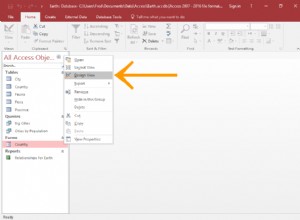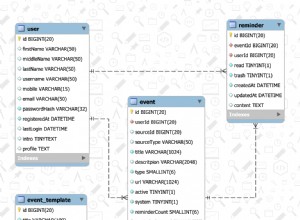Ho scritto una funzione per riparare il testo UTF-8 che è memorizzato in un varchar campo.
Per verificare i valori fissi puoi usarlo in questo modo:
CREATE TABLE #Table1 (Column1 varchar(max))
INSERT #Table1
VALUES ('Olá. Gostei do jogo. Quando "baixei" até achei que não iria curtir muito')
SELECT *, NewColumn1 = dbo.DecodeUTF8String(Column1)
FROM Table1
WHERE Column1 <> dbo.DecodeUTF8String(Column1)
Uscita:
Column1
-------------------------------
Olá. Gostei do jogo. Quando "baixei" até achei que não iria curtir muito
NewColumn1
-------------------------------
Olá. Gostei do jogo. Quando "baixei" até achei que não iria curtir muito
Il codice:
CREATE FUNCTION dbo.DecodeUTF8String (@value varchar(max))
RETURNS nvarchar(max)
AS
BEGIN
-- Transforms a UTF-8 encoded varchar string into Unicode
-- By Anthony Faull 2014-07-31
DECLARE @result nvarchar(max);
-- If ASCII or null there's no work to do
IF (@value IS NULL
OR @value NOT LIKE '%[^ -~]%' COLLATE Latin1_General_BIN
)
RETURN @value;
-- Generate all integers from 1 to the length of string
WITH e0(n) AS (SELECT TOP(POWER(2,POWER(2,0))) NULL FROM (VALUES (NULL),(NULL)) e(n))
, e1(n) AS (SELECT TOP(POWER(2,POWER(2,1))) NULL FROM e0 CROSS JOIN e0 e)
, e2(n) AS (SELECT TOP(POWER(2,POWER(2,2))) NULL FROM e1 CROSS JOIN e1 e)
, e3(n) AS (SELECT TOP(POWER(2,POWER(2,3))) NULL FROM e2 CROSS JOIN e2 e)
, e4(n) AS (SELECT TOP(POWER(2,POWER(2,4))) NULL FROM e3 CROSS JOIN e3 e)
, e5(n) AS (SELECT TOP(POWER(2.,POWER(2,5)-1)-1) NULL FROM e4 CROSS JOIN e4 e)
, numbers(position) AS
(
SELECT TOP(DATALENGTH(@value)) ROW_NUMBER() OVER (ORDER BY (SELECT NULL))
FROM e5
)
-- UTF-8 Algorithm (http://en.wikipedia.org/wiki/UTF-8)
-- For each octet, count the high-order one bits, and extract the data bits.
, octets AS
(
SELECT position, highorderones, partialcodepoint
FROM numbers a
-- Split UTF8 string into rows of one octet each.
CROSS APPLY (SELECT octet = ASCII(SUBSTRING(@value, position, 1))) b
-- Count the number of leading one bits
CROSS APPLY (SELECT highorderones = 8 - FLOOR(LOG( ~CONVERT(tinyint, octet) * 2 + 1)/LOG(2))) c
CROSS APPLY (SELECT databits = 7 - highorderones) d
CROSS APPLY (SELECT partialcodepoint = octet % POWER(2, databits)) e
)
-- Compute the Unicode codepoint for each sequence of 1 to 4 bytes
, codepoints AS
(
SELECT position, codepoint
FROM
(
-- Get the starting octect for each sequence (i.e. exclude the continuation bytes)
SELECT position, highorderones, partialcodepoint
FROM octets
WHERE highorderones <> 1
) lead
CROSS APPLY (SELECT sequencelength = CASE WHEN highorderones in (1,2,3,4) THEN highorderones ELSE 1 END) b
CROSS APPLY (SELECT endposition = position + sequencelength - 1) c
CROSS APPLY
(
-- Compute the codepoint of a single UTF-8 sequence
SELECT codepoint = SUM(POWER(2, shiftleft) * partialcodepoint)
FROM octets
CROSS APPLY (SELECT shiftleft = 6 * (endposition - position)) b
WHERE position BETWEEN lead.position AND endposition
) d
)
-- Concatenate the codepoints into a Unicode string
SELECT @result = CONVERT(xml,
(
SELECT NCHAR(codepoint)
FROM codepoints
ORDER BY position
FOR XML PATH('')
)).value('.', 'nvarchar(max)');
RETURN @result;
END
GO




